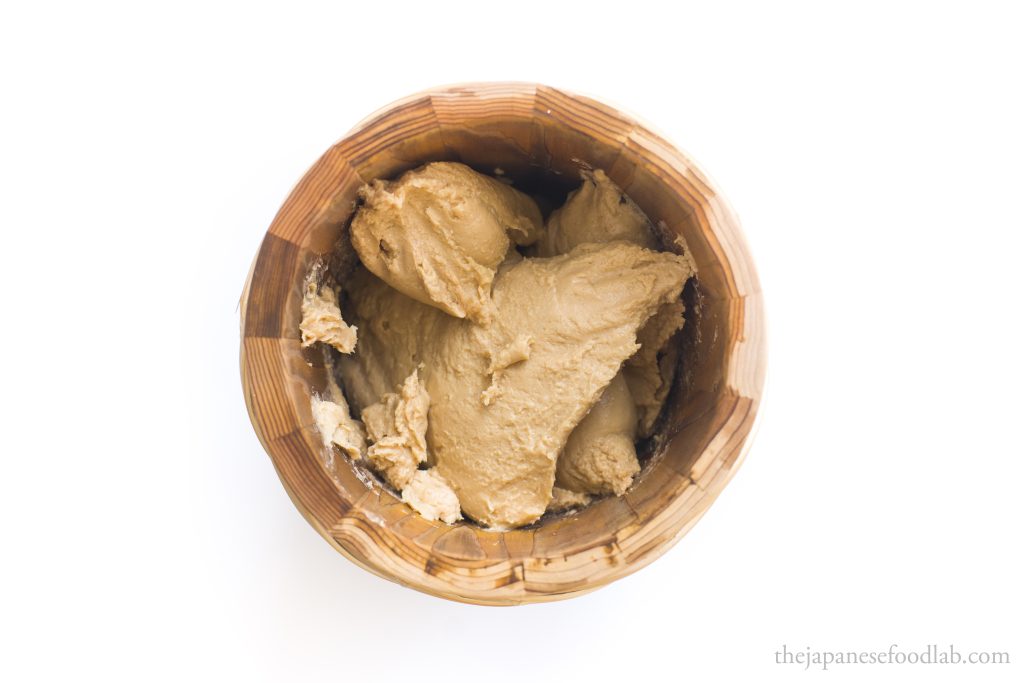
Akasu, or red vinegar is the vinegar used by traditional Edomae sushi chefs to make their sushi rice. Compared to typical white rice vinegar, it has a richer, more savory and mellowed out taste, allowing it to balance well with fish when used to make nigiri. This is because it is made from sake lees instead of rice and thus is also known as kasuzu (粕酢).
Over the years, the production of akasu gradually declined and it started to become more and more common for sushi rice to be made from rice vinegar. Even today, only the most traditional sushi establishments continue to use red sushi vinegar and it’s quite difficult to acquire it for home consumption.
Arguably the most famous akasu producer is Yokoi, which supplies most of the top Michelin starred sushi restaurants with their various grades of sushi vinegar. In this article, we’ll be going through the process used to make red sushi vinegar and explore the possibility of replicating it at home.
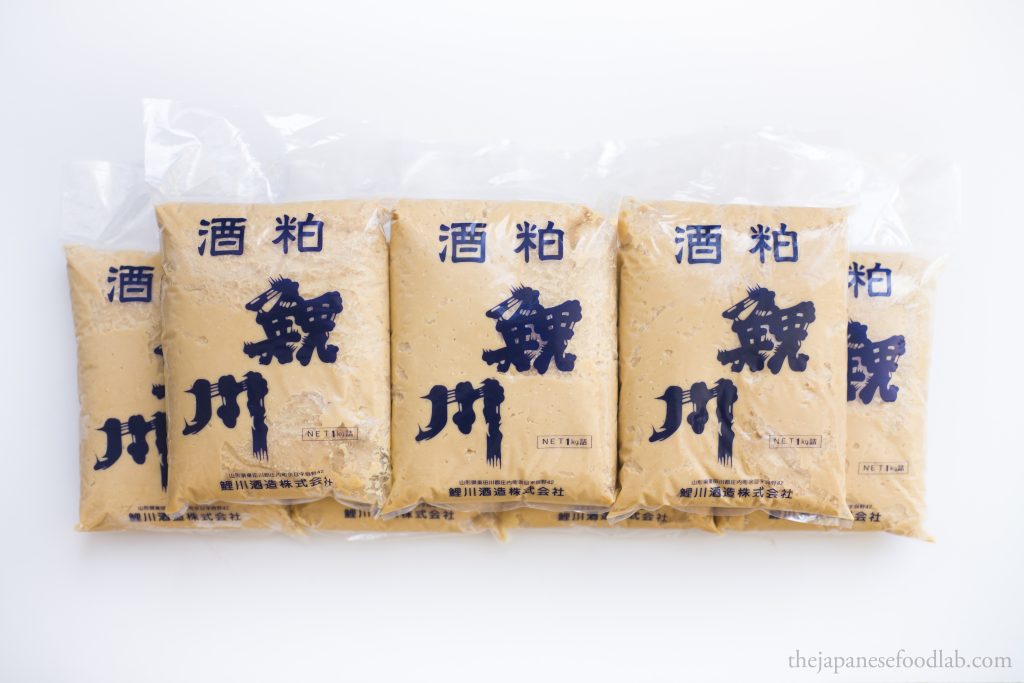
Sake lees, also known as sake kasu, is a byproduct of the sake brewing process. It is made from the rice and other solids that are left over after the sake has been pressed and filtered. The process of making sake begins with the cultivation and preparation of rice. Rice used in the sake making process is similar to rice you can find on the market for consumption but is milled to remove the outer layers and expose the starch-rich core. The milled rice is then washed and soaked in water to soften it. Next, the rice is placed in a tank where it is inoculated with koji fungus which converts the starch in the rice to sugar.
The mixture of rice, koji, and water is transferred to a fermentation tank where it is mixed with yeast. The yeast ferments the sugars into alcohol, producing a sake with an alcohol content of around 15-20%. After fermentation, the sake is pressed and filtered to separate the liquid from the solids. The solids, which consist of a white mixture of yeast, rice, koji and lactic acid bacteria, are called sake lees.
Sake lees are highly nutritious and have many different applications. They can be used to flavor stews which are known as kasujiru (粕汁) or as a pickling bed known as kasuzuke (粕漬け). They are also typically used in the manufacturing of cosmetic products, from facemasks to cream.
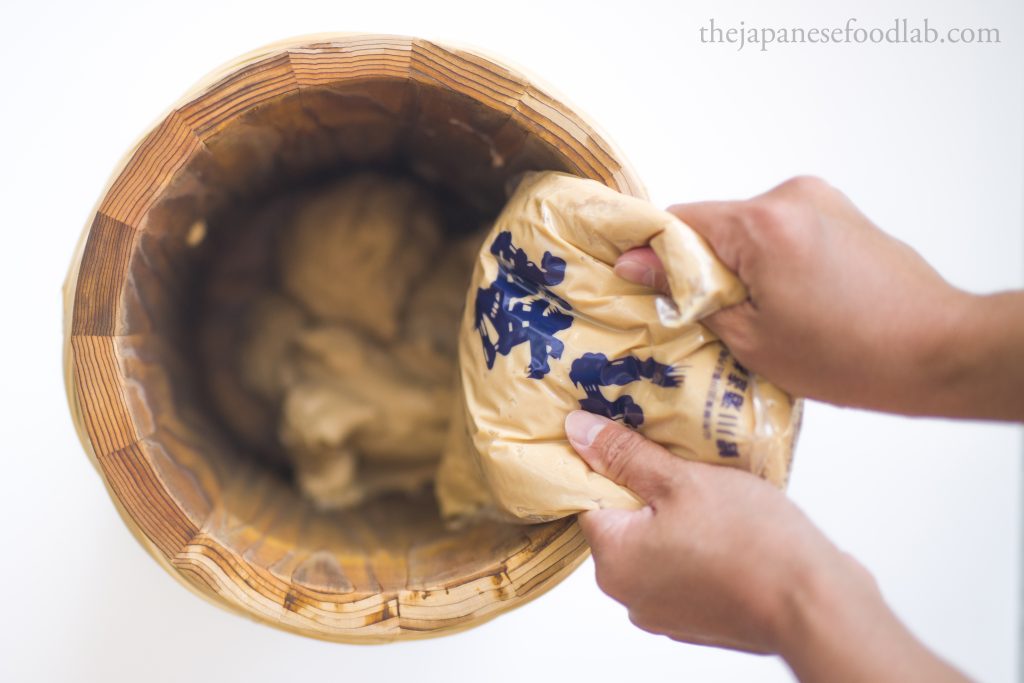
Whilst rice in itself does not have a high amount of protein, due to the addition of yeast and koji, sake lees have a much higher proportion of protein comparatively. In order to make akasu, the sake lees are first aged for 2 to 3 years in a closed wooden tank. During this period, the sake lees darken from a white color slowly into a dark reddish almost brown color, hence why the vinegar is called red vinegar. As the sake lees age, the leftover enzymes from the koji continue to break down the long chains of proteins into smaller segments and then into their constituent amino acids. As these proteases continue to work, the lees slowly develop into a savory and umami rich paste. The lees are also able to withstand the aging process without going bad as they contain an amount of alcohol leftover from the sake making process.
Following our article on creating Iio Jozo’s famous sweet potato vinegar, the next step needed to convert the sake lees into vinegar is with the addition of alcohol. All vinegars are made using acetic acid bacteria which convert alcohol into acetic acid which gives vinegar its sour taste. While most vinegars start off by using yeast to convert sugar into alcohol for the acetic acid bacteria to work. This is not possible with sake lees as the majority of starch and sugar from the rice has already been converted into alcohol during the sake production stage and subsequently filtered and extracted when the sake is separated from its lees. Yeast also does not grow well on sake lees due to residual alcohol left behind.
As such, the only way to provide alcohol for acetic acid production is to add it directly to the sake lees. Sake, shochu and other distilled spirits are all used as sources of alcohol depending on the desired taste profile and acidity of the final vinegar. At this stage, the solid sake lees are mixed with alcohol and water to form a mixture known as a moromi. In an aim to obtain the acetic acid proportions of Yokoi’s famous red sushi vinegar, we aimed for 6 to 8% alcohol by volume content in the final moromi with an aim to yield 4 to 5% acetic acid in the final vinegar.
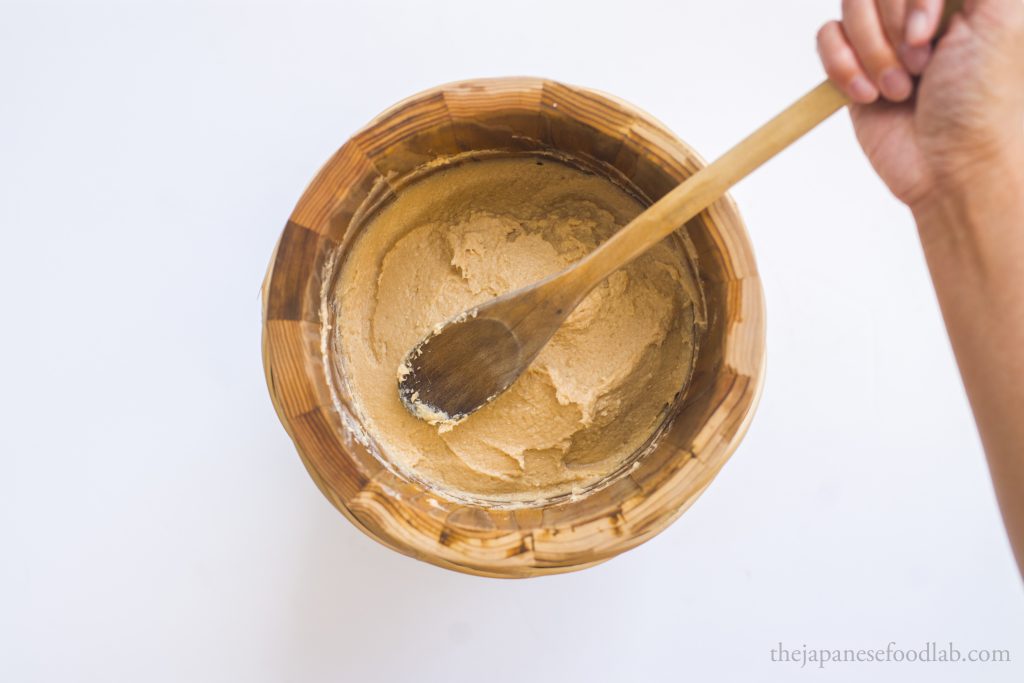
The moromi is then poured into wooden barrels. A vinegar mother is then added to the moromi to begin fermentation. A vinegar mother is similar to a kombucha scoby in that it’s a symbiotic disc of acetic acid bacteria, yeast and cellulose which will kick start the conversion of alcohol into acetic acid. The vinegar is then allowed to ferment for 2 to 3 months before being filtered and transferred to another wooden barrel to be further aged for 3 months.
An alternative way to speed up the fermentation of vinegar is to aerate the vinegar with oxygen. This can be done easily with a home setup using an aquarium bubbler. Whilst this can shorten the duration required for the vinegar to ferment to a satisfactory level of acetic acid down to 2 to 3 weeks, more complex and mellow flavors that can only develop with time will be lost. This is why the most sought after red vinegars are fermented over long periods of time, with the highest quality ones being fermented for over 10 years.
No matter how you choose to ferment your vinegar, it’s very important that the vinegar is covered to prevent flies from contaminating your vinegar. Fruit and vinegar flies love the smell of fermenting vinegar and will try and get in through any small gap that’s present. Unfortunately, it’s not possible to seal our container with an airtight lid as acetic acid bacteria need oxygen to convert the alcohol into vinegar.
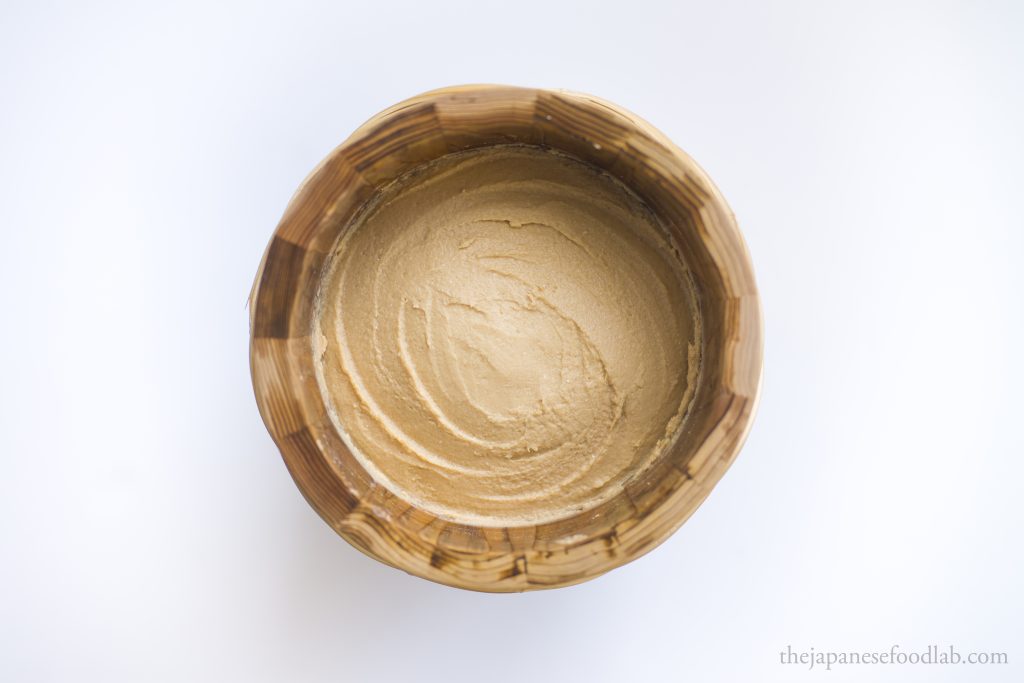
Aging sake lees
During the experimentation process for this recipe, it was hard to determine whether or not to age the sake lees under airtight conditions or not. This was due to the fear of mold growth on the lees if there was too much oxygen exposure but then risking off flavors from developing if there was no exposure to oxygen at all.
Traditionally, the sake lees are usually aged in cedar boxes or barrels with the lid shut, which would be a similar set up to a traditional miso barrel in that it isn’t completely airtight from oxygen. This is because there are gaps between the wood that still allow some amount of airflow.
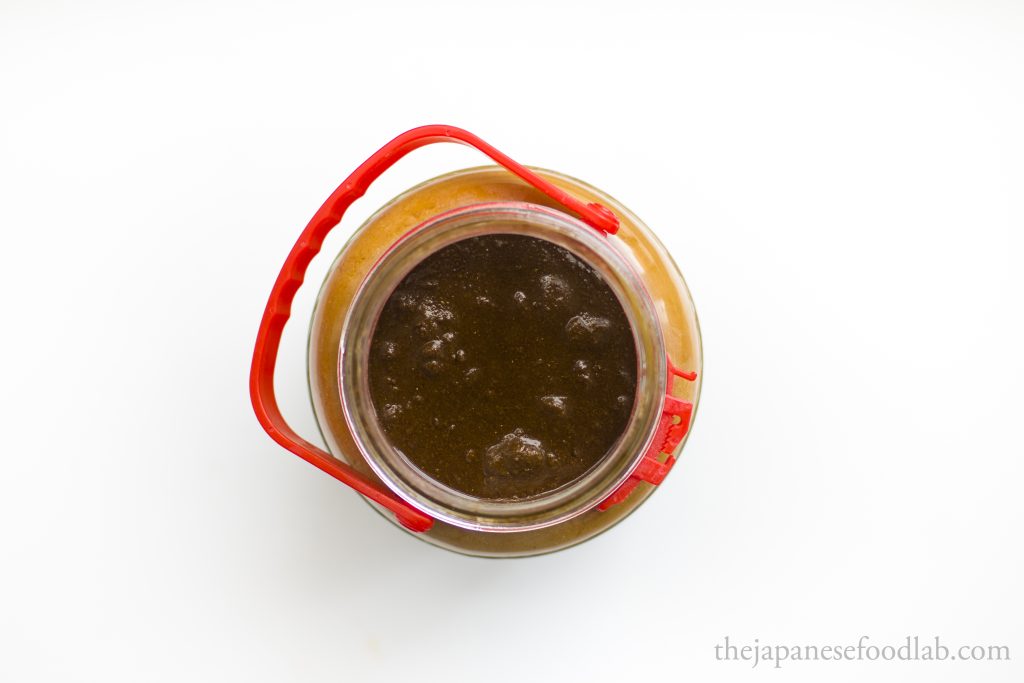
To make a comparison, we made up two batches of sake lees for aging, one stored in a simple airtight umeshu jar with the other stored in a traditional cedar barrel. After a single year, it was quickly apparent that under airtight conditions, the change in color of the lees was significantly slower. The only part of the sake lees stored in the umeshu jar that darken to the desired reddish brown quickly was the part exposed to oxygen right on the surface. This batch of lees also didn’t completely darken evenly, with certain parts darkening at a faster rate. Other than that, we’re happy to report that this batch actually aged beautifully with no problems in terms of taste or smell. If anything, the fact that it aged slower might have been beneficial because it’ll allow you to age it for a longer period of time before starting the vinegar fermentation process. Testing on this is currently ongoing.
In contrast, the sake lees aged in the wooden cedar barrel aged much quicker and more evenly. The color darken much faster compared to the lees stored in an airtight condition, but also dried out much faster. This did not only happen to the lees on the surface of the barrel that was exposed to open air, but inside the walls as well. This is because the wooden walls are permeable to oxygen and water which facilitate the even aging of the lees.
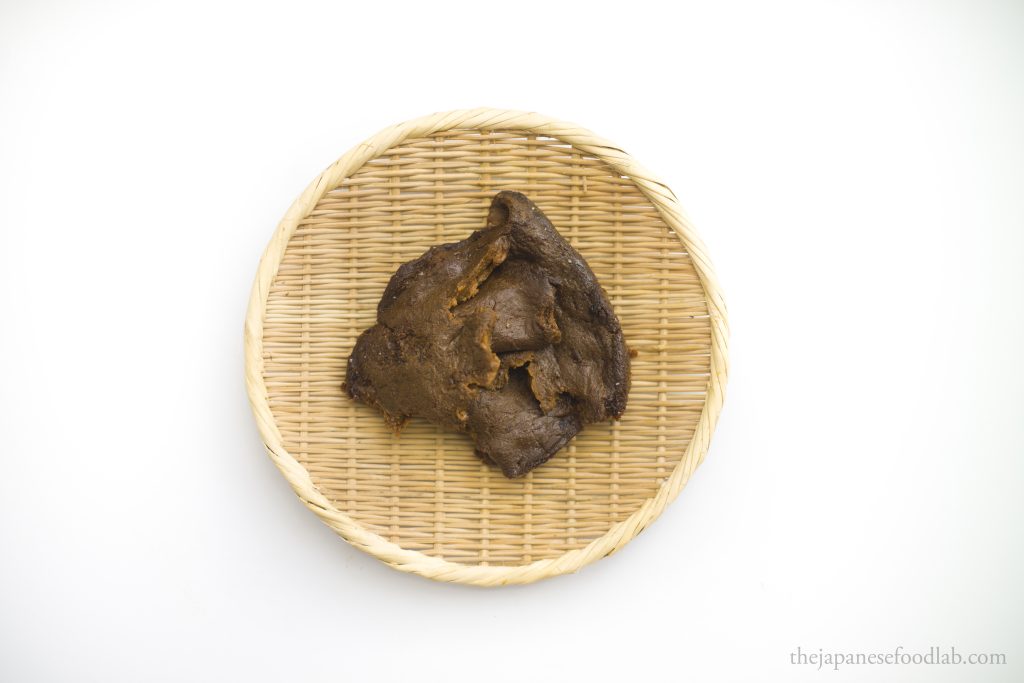
How to ferment Edomae red sushi vinegar from sake lees
3kg sake lees
7.7kg of water
4.8kg of shochu 25% ABV
2.5kg of vinegar mother
To age the sake lees, pack tightly in a container and cover with the top of the container with cling wrap. Push the cling wrap into the container so that it’s in contact with the surface of the sake lees and push the side up against the wall of the container so that it’s fully covered. If aging in a non-wooden container, screw on the lid loosely so that some oxygen can still get in. If the container is transparent, use newspaper to cover the sides of the container so that it’s not exposed to sunlight. Store in a cool place to age for 3 years. Check every 3 months or so to see if there’s any color development. The sake lees should gradually become darker and darker (read the notes section for more information). If there are any signs of mold growth on the surface of the lees, scrap away the top layer of the lees and discard. To prevent further mold growth, either salt the top of the lees generously or pour in some alcohol. What typically occurs however is that the top layer of the lees dried out and forms a protective layer before any mold growth occurs.
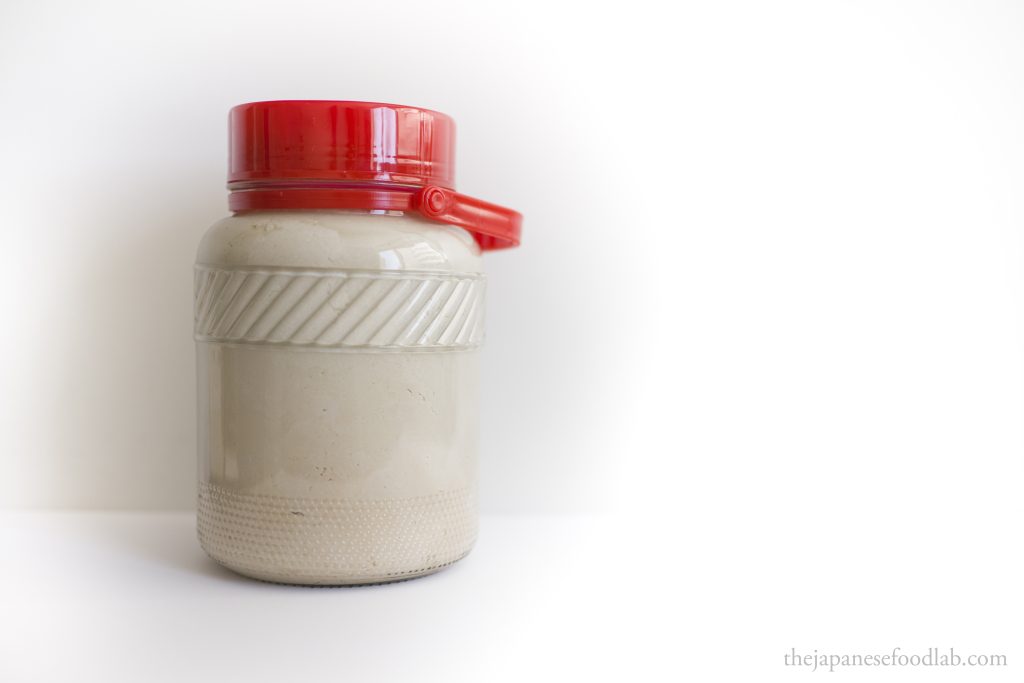
If after 3 years the lees are still quite light in color, there are various factors that could have slowed the aging of the lees such as living in a cold climate or there being a lack of oxygen flow. In such a case, we recommend aging the lees further until the desired color is reached. The sake lees have finished aging when they’re a dark brown-ish amber color.
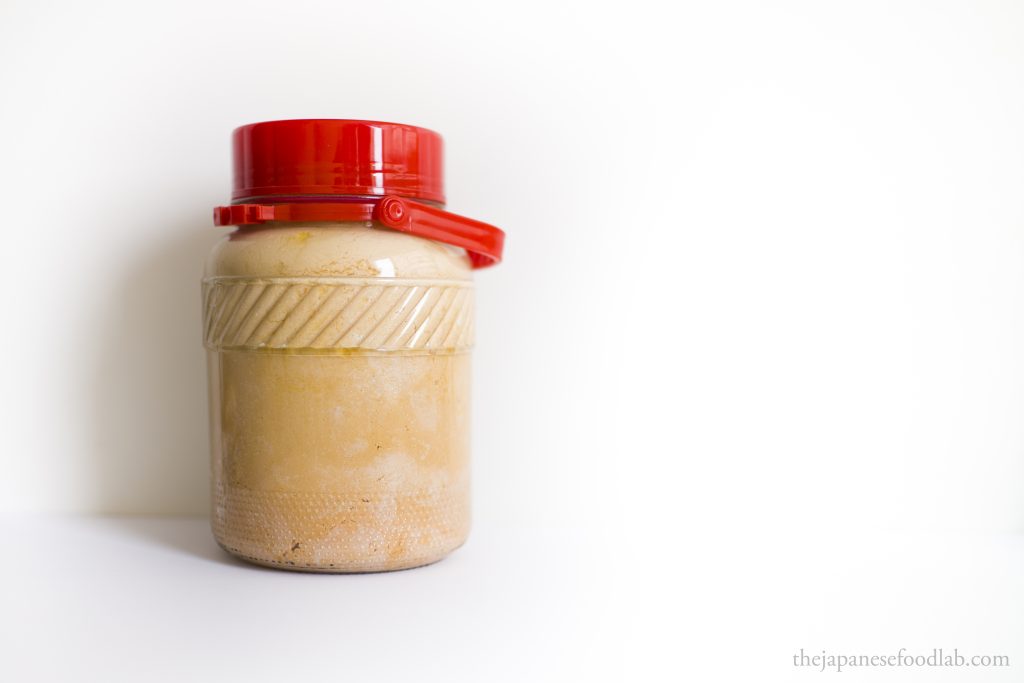
In a large container, mix the aged sake lees with water and alcohol. The lees at this point can be quite sticky and hard to work with but try your best to dissolve the lees evenly in the water. We recommend using a stick blender or food processor to make sure it’s well dissolved. The final moromi should have the consistency of a thin soup.
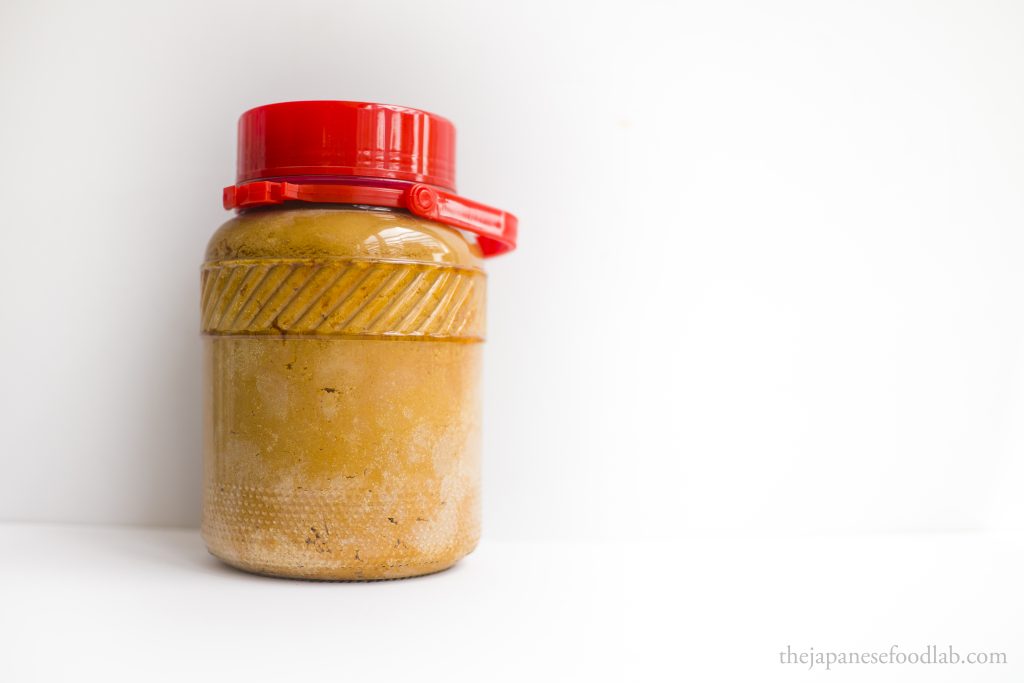
Stir in the vinegar mother and cover the surface of the container with 2 layers of muslin cloth to prevent any flies from entering. Allow to ferment at room temperature for 3 to 4 months or until the vinegar has reached your desired level of acidity. Once finished, It’s possible to age the vinegar further to allow more complex tastes to develop. We recommend the aging be done in a wooden cask or barrel if possible, else allowing it age in its original container should also work. Aging the vinegar in a wooden container allows some evaporation to occur which will concentrate the taste of the vinegar during aging.
When ready to consume, filter the vinegar through a sieve layered with several layers of muslin cloth. Alternatively, the lees will have settled at the bottom of the moromi if the container is left undisturbed. Simply decant the vinegar into another container, leaving behind the unwanted sediment.
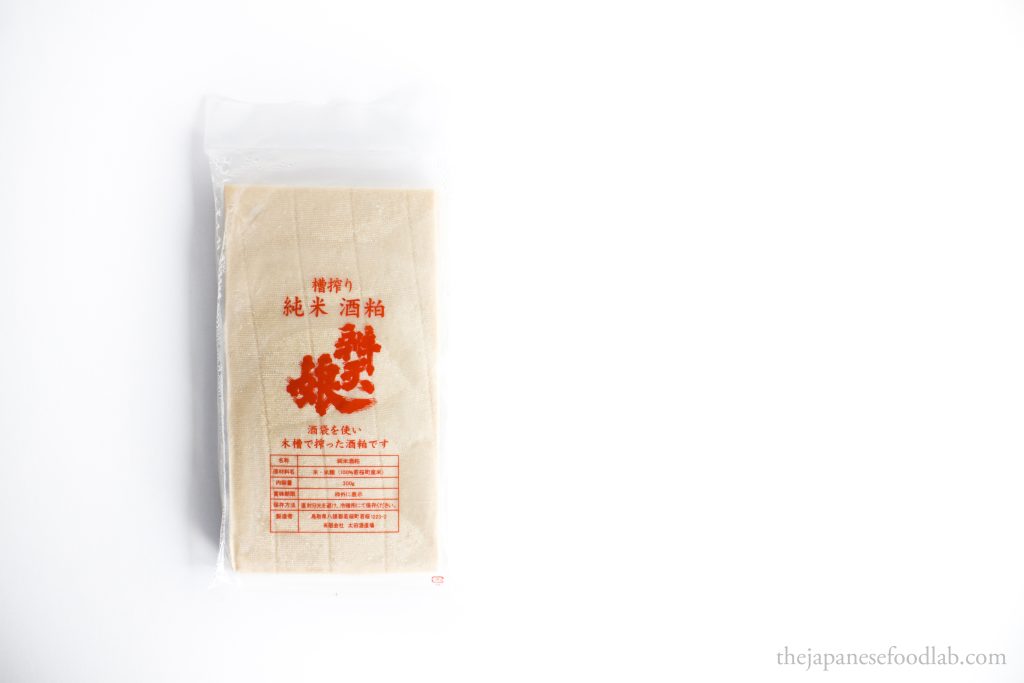
Notes:
For this recipe you’ll want a container that will fit the amount of sake lees you’ll be aging. Because the lees will be aged for a minimum of 3 years in order to develop the desired flavor, we recommend aging at least 3kg of lees to make it worth the wait, especially if you can find an affordable source.
You’ll then need a large container or barrel to ferment the vinegar in, ideally 5 to 6 times the volume of the sake lees you’re aging. Aged sake lees are very compact and concentrated, meaning that you’ll have to dilute it by 4 to 5 times with water and alcohol to obtain a liquid enough moromi for the acetic acid bacteria to work on.
Most vinegar recipes that call for 20% of vinegar’s weight in mother vinegar. That means if you’re fermenting 1kg of red wine to make red wine vinegar, you’ll want to add 200g of vinegar mother plus the unpasturised vinegar it comes with. Because such a high amount of vinegar mother is required, it has the potential to alter the taste of the final product. Therefore, people tend to try and source the same vinegar mother for the type of vinegar they intend to make. For sake lees vinegar, it’s practically impossible to source an akasu vinegar mother or unpasteurized akasu. Instead, your best bet is to source unpasteurized Japanese rice vinegar, or any neutral unpasteurized vinegar such as apple cider vinegar.
The amount of alcohol you add to the recipe is variable based on its ABV. If it has a higher ABV, you’d want to use less. The target alcohol percentage of the final moromi should be 8% ABV. This is ignoring the residual alcohol already present in the sake lees.
When aging sake lees, it should initially smell fresh like sake and sometimes almost yeasty like bread before slowly developing darker more caramelized characters akin to molasses. If you have a bottle of red sushi vinegar made from sake lees, it helps to compare the smell of aging sake lees to the smell of the finished vinegar. You’ll notice that whilst they don’t smell similar initially, it makes sense ‘intuitively’ how the smell of sake lees will gradually evolve to be more similar to the finished vinegar. As time goes by, you should notice the smell of the sake lees converge with the smell of the store-bought akasu vinegar but without the sour notes. As this occurs you know you’re on the right track. If they smell radically different however, something might have gone wrong along the way.
If you’re adventurous, it’s possible to leave the sake lees to age up to 6 years when they’re almost pitch black to yield an amazingly rich and mellow vinegar.